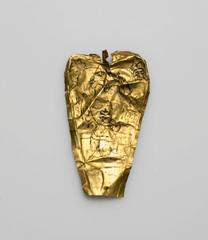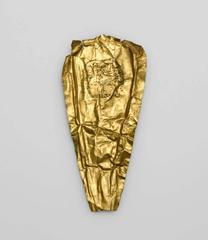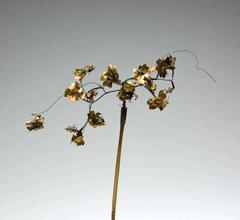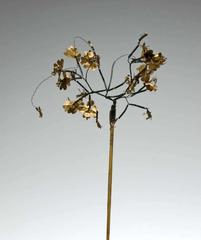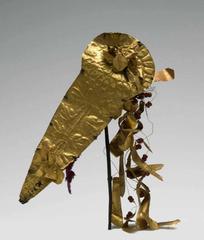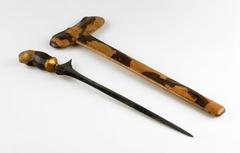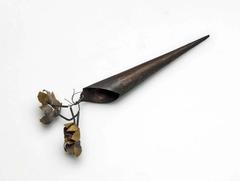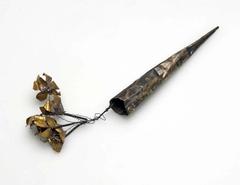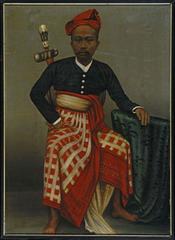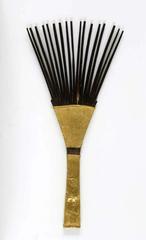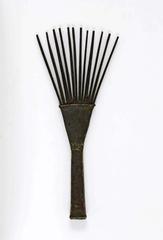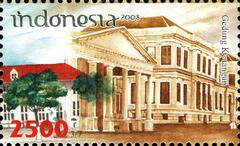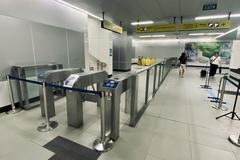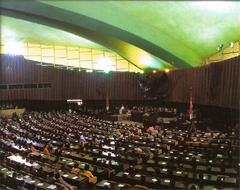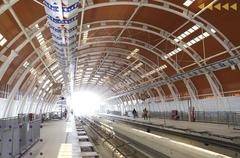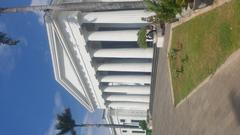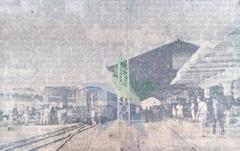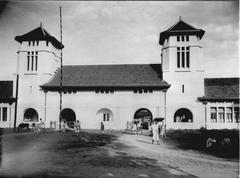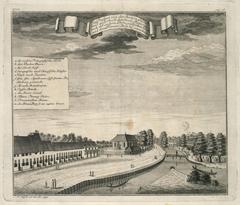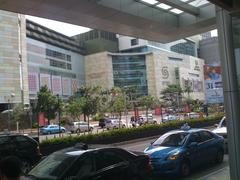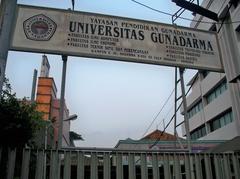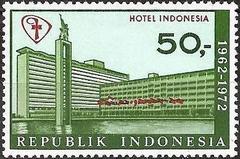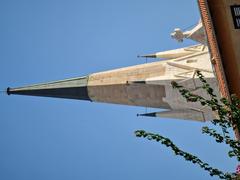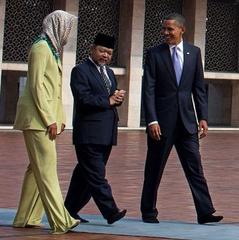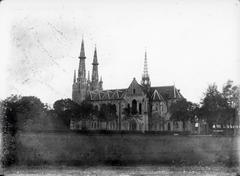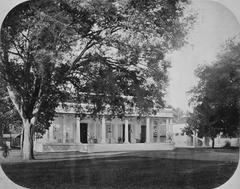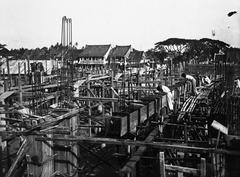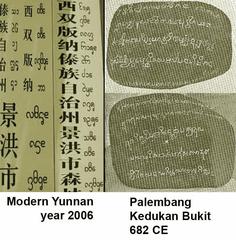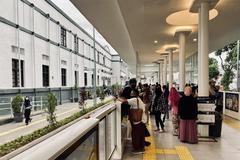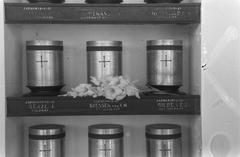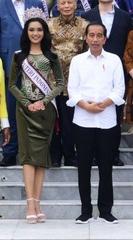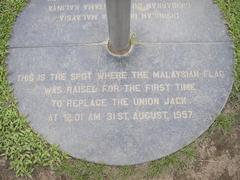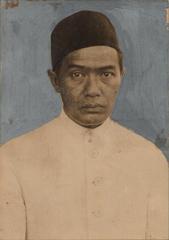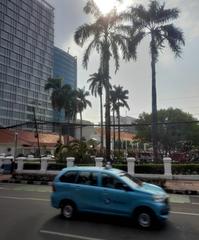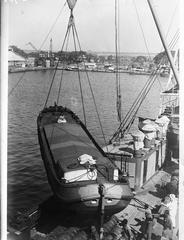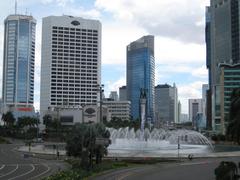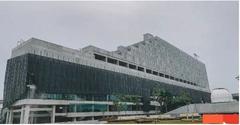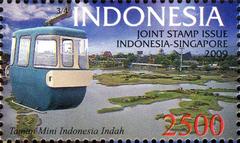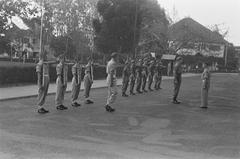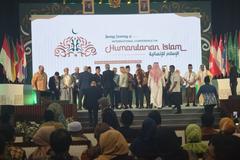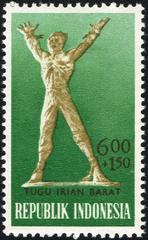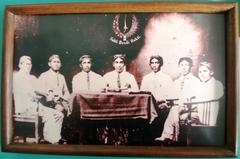
National Museum of Indonesia Jakarta: Visiting Hours, Tickets, and Historical Sites Guide
Date: 14/06/2025
Introduction
The National Museum of Indonesia, known locally as Museum Nasional or Museum Gajah (Elephant Museum), stands as Jakarta’s preeminent institution for exploring the country’s deep and diverse cultural heritage. Established in 1862, its neoclassical facade and iconic elephant statue hint at a layered history that traces Indonesia’s journey from prehistory through Hindu-Buddhist kingdoms, Islamic sultanates, colonial times, and the present day. This guide provides detailed insight into the museum’s history, collections, architecture, visiting hours, ticketing, accessibility, and nearby attractions—ensuring visitors have all the information needed for a meaningful and enriching experience (Wikipedia: National Museum of Indonesia).
Table of Contents
- Introduction
- Historical Overview
- Architectural Significance
- Collections & Must-See Exhibits
- Visiting Information
- Travel Tips and Nearby Attractions
- Frequently Asked Questions (FAQ)
- Conclusion
- References
Historical Overview
Colonial Foundations and Development
The museum’s origins trace back to the Bataviaasch Genootschap van Kunsten en Wetenschappen, founded in 1778 by Dutch scholars and officials. Its mission: to study and collect artifacts, manuscripts, and specimens significant to the Indonesian archipelago. Rapid growth of the society’s holdings necessitated a dedicated building, culminating in the completion of the neoclassical museum on Jalan Merdeka Barat in 1868 (Museum Nasional: Sejarah).
Key Milestones and Modernization
The museum’s collections expanded under Dutch administration, becoming a center for archaeological, ethnographic, numismatic, and historical research (Encyclopedia Britannica: National Museum of Indonesia). In 1871, King Chulalongkorn of Siam gifted the bronze elephant statue, now a beloved symbol at the museum’s entrance. Following Indonesian independence in 1949, the museum was nationalized and reoriented towards showcasing the archipelago’s unity and diversity.
A major expansion in 2007 introduced a new wing, doubling exhibition space and enabling modern conservation and digital cataloguing. Today, the museum houses over 140,000 artifacts, making it the largest collection in Southeast Asia (Museum Nasional: Koleksi).
Restoration and Repatriation Efforts
A significant fire in September 2023 damaged part of the A Building and some exhibits. The government’s swift restoration response, alongside public support, highlighted the museum’s cultural importance (Jakarta Globe: National Museum Fire). The museum also plays a key role in the repatriation of Indonesian artifacts from abroad, recently receiving more than 800 items from the Netherlands (VOA News).
Architectural Significance
The original museum building, completed in 1862, reflects neoclassical European architecture with grand columns and high ceilings, symbolizing both colonial authority and cultural aspiration (ArchDaily). The juxtaposition of the historical facade with the modern expansion embodies Indonesia’s evolving identity. The central elephant statue, a diplomatic gift from Siam, stands as a visual and symbolic gateway to Jakarta’s civic and historical heart.
Recent modernization efforts have improved security, accessibility, and visitor engagement, while architectural proposals aim to further integrate colonial and modern elements and reposition the elephant statue to enhance its prominence (ArchDaily).
Collections & Must-See Exhibits
The museum’s galleries are organized both chronologically and thematically, representing Indonesia’s vast and diverse heritage:
- Prehistory Collection: Stone tools, fossils, and bronze artifacts including the renowned Dong Son drum.
- Hindu-Buddhist Period: Statues from Borobudur, the Prajnaparamita statue, and the formidable Adityavarman as Bhairava.
- Numismatics and Heraldry: Ancient coins, banknotes, and royal insignia tracing Indonesia’s economic and political history.
- Ceramics: Local and imported ceramics, notably Chinese and Southeast Asian porcelain.
- Ethnography: Traditional costumes, textiles, Dayak shields, Toraja effigies, and Wayang puppets reflecting the archipelago’s ethnic diversity.
- Geography and History: Maps, manuscripts, and archival photographs documenting Indonesia’s landscape and historical transformation.
- Repatriated Artifacts: Recent returns from the Netherlands, including Buddhist statues and royal regalia, are a testament to Indonesia’s ongoing heritage preservation (VOA News).
Must-See Artifacts
- Statue of Adityavarman as Bhairava (14th-century Sumatran masterpiece)
- Borobudur Buddha Statues (varied mudras from Central Java)
- Dong Son Drum (pre-historic bronze)
- Durga Mahisasuramardini (recently repatriated)
- Prajnaparamita Statue (8th-century Buddhist icon)
- Royal Regalia and Jewelry (from repatriated collections)
Visiting Information
Hours and Tickets
- Days Open: Tuesday to Sunday, 8:00 AM – 4:00 PM
- Closed: Mondays and major public holidays
- Admission:
- Indonesian adults: IDR 5,000–10,000
- International visitors: IDR 10,000–20,000
- Students (with ID): IDR 5,000
- Children under 12: Free
- Purchasing: Tickets available at the entrance; check Official Museum Website for latest updates.
Accessibility
- Wheelchair ramps and accessible restrooms are provided.
- Elevators and staff assistance are available.
- Audio guides and guided tours offered in Indonesian and English.
Tours and Programs
- Guided tours are available in multiple languages—recommended for deeper context.
- Special exhibitions, workshops, and educational programs are held regularly (Museum Nasional: Virtual Tour).
- Check the website or visitor center for current schedules.
Visitor Guidelines
- Photography is allowed in most galleries, but no flash or tripods.
- Respect exhibit signs and staff instructions.
- Large bags may be checked at the cloakroom for security.
Travel Tips and Nearby Attractions
- Getting There: Located at Jalan Medan Merdeka Barat No.12, Central Jakarta. Accessible via TransJakarta, taxis, or ride-hailing services. Parking available.
- Best Times: Weekday mornings for fewer crowds.
- Other Attractions: Combine your visit with nearby Merdeka Square, National Monument (Monas), Jakarta Cathedral, and Istiqlal Mosque.
- Amenities: Café, museum shop, rest areas, and digital kiosks.
- Dress Code: Comfortable shoes and modest attire recommended.
Frequently Asked Questions (FAQ)
Q: What are the museum’s opening hours?
A: Tuesday–Sunday, 8:00 AM to 4:00 PM. Closed on Mondays and national holidays.
Q: How much are tickets?
A: Indonesian adults: IDR 5,000–10,000; International visitors: IDR 10,000–20,000; Students: IDR 5,000; Children under 12: Free.
Q: Is it accessible for people with disabilities?
A: Yes, with ramps, elevators, and accessible restrooms available.
Q: Are guided tours offered?
A: Yes, in Indonesian and English. Check the official website for availability.
Q: Can I take photos?
A: Yes, in most galleries, but avoid flash and tripods.
Q: What else can I visit nearby?
A: Monas, Jakarta Cathedral, Istiqlal Mosque, and Merdeka Square are all within walking distance.
Conclusion
The National Museum of Indonesia is more than a collection of artifacts—it is a vibrant gateway to understanding the archipelago’s complex history, cultural diversity, and evolving national identity. Its accessible location, affordable entry, and extensive collections make it a highlight of any Jakarta itinerary. Restoration efforts and ongoing repatriation initiatives underscore the museum’s pivotal role in heritage preservation. Enhance your visit by exploring digital resources, participating in guided tours, and discovering nearby landmarks for a full immersion into Indonesia’s past and present.
For the latest visitor updates, exhibitions, and virtual experiences, consult the Official Museum Website and download the Audiala App.
References
- Wikipedia: National Museum of Indonesia
- Museum Nasional: Sejarah
- Encyclopedia Britannica: National Museum of Indonesia
- Museum Nasional: Koleksi
- ArchDaily: Museum Nasional Indonesia
- Jakarta Globe: National Museum Fire
- Time Out Jakarta: National Museum of Indonesia
- Museum Nasional: Virtual Tour
- VOA News
- Audiala App
- Official Museum Website

